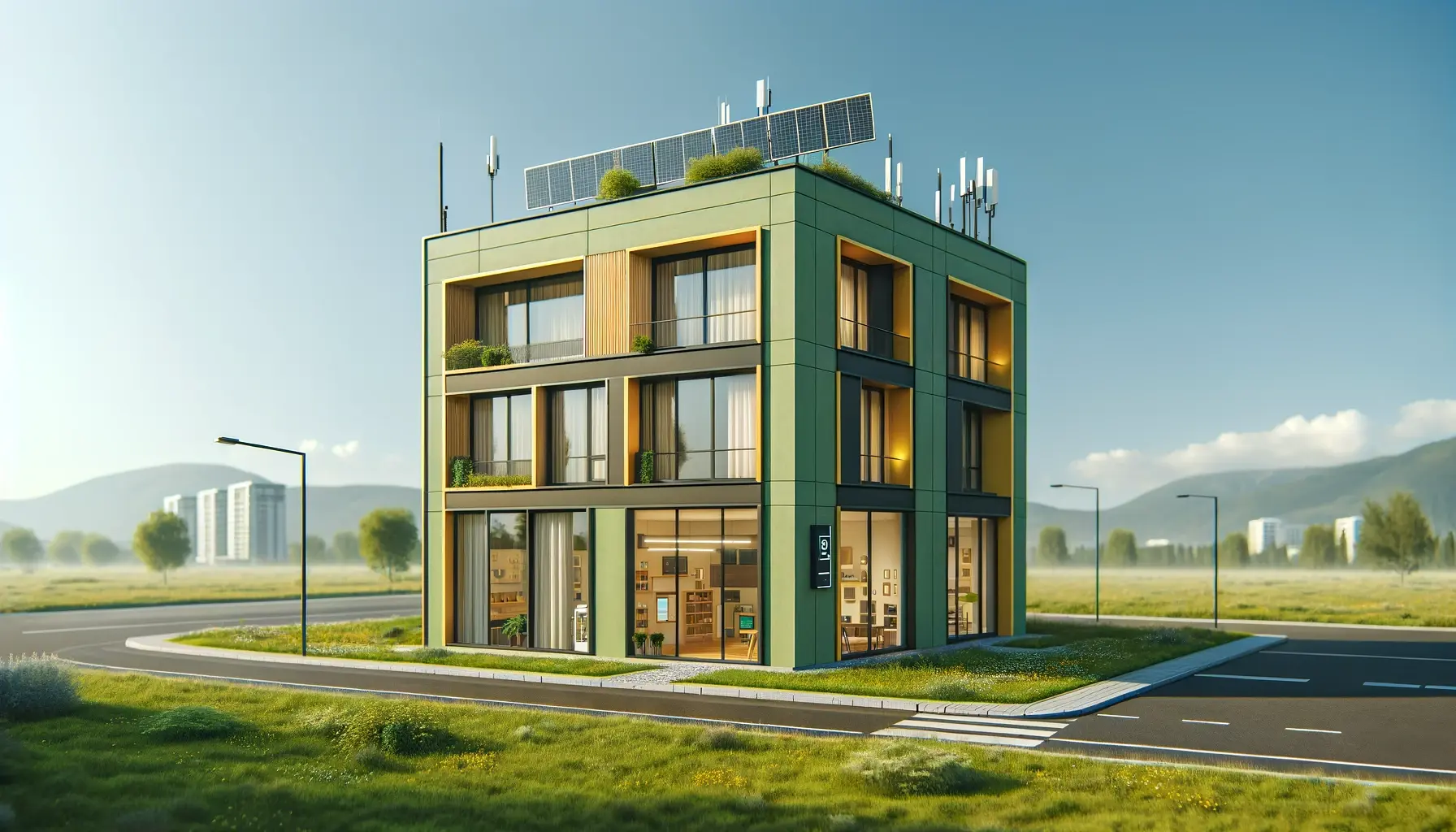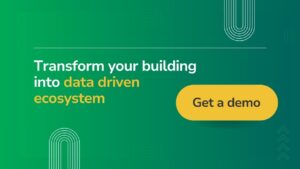Smart building platforms are advanced, integrated systems that go beyond traditional Building Management Systems (BMS) in managing and automating the functionalities within buildings. These platforms represent an evolution in building technology, utilizing the Internet of Things (IoT), Artificial Intelligence (AI), and extensive data analytics. They connect with existing BMS and enhance them by adding layers of intelligence, adaptability, and interactivity, creating a more interconnected and responsive environment.
Basic Principles Behind Smart Building Platforms
Enhanced Integration with BMS: While BMS primarily controls and monitors the building’s mechanical and electrical equipment, smart building platforms extend these capabilities. They integrate seamlessly with existing BMS infrastructure, enhancing its functionality with advanced IoT networks and data analytics.
IoT and Data-Driven Insight: In cases where traditional BMS lack extensive data-gathering capabilities, smart building platforms supplement these systems with IoT networks. These networks comprise numerous sensors and devices that collect a wider range of data, offering deeper insights into building operations.
Advanced Data Processing: The platforms use sophisticated algorithms and AI to process and analyze data from both BMS and IoT devices. This level of analysis is more advanced than typical BMS capabilities, enabling predictive maintenance, energy optimization, and enhanced operational efficiency.
Proactive Automation and Control: Going beyond the reactive nature of traditional BMS, smart building platforms actively learn and adapt. They automate building systems like HVAC, lighting, and security in a more dynamic manner, responding proactively to changing conditions and occupant behaviors.
User Interaction and Accessibility: These platforms provide intuitive interfaces for both building managers and occupants, offering more interaction and control options than standard BMS. Users can access real-time data, control various building functions, and receive customized reports through user-friendly dashboards.
Learning and Adaptation: Smart building platforms continuously learn from the data they collect, adapting their operations for improved efficiency and occupant comfort. This adaptive learning capability is a significant advancement over traditional BMS.
History and Evolution of Smart Building Platforms
The Early Days: Traditional Building Management Systems
BMS originated in the late 20th century, focusing on controlling and monitoring building utilities like HVAC, lighting, and power systems. These systems were reactive, designed to maintain predefined settings, and lacked advanced data analysis or proactive adjustment capabilities. Honeywell’s TDC 2000 and Johnson Controls’ Metasys® in the 1980s and 1990s exemplify the initial phase of BMS.
Transition to Automation and Integration
In the early 2000s, BMS started shifting towards automation and integration, with systems integrating more sophisticated controls. However, these systems were still relatively siloed and lacked comprehensive communication capabilities. Siemens’ Apogee and Schneider Electric’s TAC Vista were developed in this era.
The Advent of IoT and Connectivity
With the expansion of IoT technology, buildings began incorporating a network of sensors and connected devices, vastly expanding data collection capabilities. This era introduced greater connectivity between various building systems and devices, paving the way for better building management. Siemens’ Desigo and Cisco’s Network Building Mediator were the greatest examples of this kind of platform.
Emergence of Smart Building Platforms
Smart building platforms emerged as a more advanced solution, building upon the foundation laid by traditional BMS but introducing substantial innovations in data analytics, real-time monitoring, and predictive maintenance. These platforms were designed to integrate with and enhance existing BMS, adding layers of intelligence and adaptability. Platforms like IBM’s TRIRIGA, integrated with IoT and cloud technologies, emerged as more advanced solutions.
The Role of AI and Advanced Analytics
The integration of AI and machine learning brought about the capability for predictive analytics, enabling buildings to anticipate and respond to various needs and conditions proactively. The shift towards data-driven management allowed for more nuanced and efficient building operations, leading to energy savings, improved occupant comfort, and better resource management. The incorporation of AI and machine learning in platforms like Google’s Nest and Honeywell’s Forge represented a significant leap forward.
Smart Building Platform: Use Cases
Energy Efficiency and Sustainability
Smart building platforms optimize energy use through intelligent HVAC systems, automated lighting, and energy-efficient building materials. They leverage real-time data to adjust energy consumption based on occupancy and environmental conditions.
-
- Renewable Energy Integration: Buildings like the Edge in Amsterdam use smart platforms to integrate renewable energy sources, significantly reducing carbon footprints.
-
- Smart Grid Interaction: Smart buildings in urban areas are increasingly interacting with smart grids, balancing energy loads and contributing to overall city sustainability.
-
- LEED Certification: The Pixel Building in Melbourne employs a smart building platform to achieve a high LEED rating through energy-efficient operations.
Improved Operational Efficiency
These platforms automate routine tasks such as climate control, lighting, and security checks. Predictive maintenance, powered by AI, anticipates potential system failures before they occur, reducing downtime.
-
- Facility Management Automation: The use of Siemens’ Desigo CC in managing complex facilities like the O’Hare International Airport, automating several operations for efficiency.
-
- Smart Hospitality: Hotels like the Aria Resort & Casino in Las Vegas utilize smart systems for room energy management, reducing operational costs.
-
- Predictive Maintenance: Large facilities like airports are using smart platforms to predictively maintain escalators, elevators, and HVAC units, improving overall operational efficiency.
Enhancing Occupant Comfort and Safety
Smart building platforms ensure optimal indoor air quality, lighting, and temperature, tailored to the preferences of occupants. Enhanced safety features include real-time surveillance and emergency response systems.
-
- Personalized Comfort Settings: Offices like the CISCO Toronto Innovation Center use smart platforms to allow employees to personalize their workspace environments, including temperature and lighting.
-
- Healthcare Facilities: Hospitals like the Lucile Packard Children’s Hospital at Stanford use smart platforms for patient room environmental control, contributing to better patient care.
-
- Advanced Emergency Protocols: In Tokyo, the Roppongi Hills Mori Tower’s smart platform provides earthquake-resistant features and automated evacuation guidance.
Sensgreen’s Smart Building Platform: Redefining the Smart Building Landscape
Sensgreen has developed a platform that not only embraces the core principles of smart building technology but also pushes the boundaries in terms of efficiency, sustainability, and user experience.
Integration with Existing Systems
Sensgreen’s platform exemplifies seamless integration with existing BMS, enhancing them with advanced IoT capabilities. This integration ensures that even buildings with older BMS can enter the future without requiring complete overhauls.
Advanced IoT and AI Capabilities
The platform’s strength lies in its sophisticated network of IoT sensors and AI-driven analytics. This combination allows for more granular and accurate data collection and analysis, leading to smarter decision-making in building management.
Proactive and Predictive Management
Moving beyond traditional reactive models, Sensgreen’s platform employs proactive controls and predictive maintenance. This approach not only improves operational efficiency but also extends the lifespan of critical building systems.
User-Centric Design
Sensgreen places a strong emphasis on user interaction and accessibility. Their platform provides intuitive dashboards and controls, making it easier for managers and occupants to engage with their environment actively.
Sensgreen’s Smart Building Platform stands as a testament to the power of technology in transforming our buildings and, by extension, our cities. It aligns perfectly with the current and future needs of modern infrastructure, offering a solution that is not only intelligent and efficient but also adaptable and user-friendly. As smart building platforms continue to evolve, Sensgreen is poised to remain at the forefront, leading the charge towards a smarter, more sustainable future.



